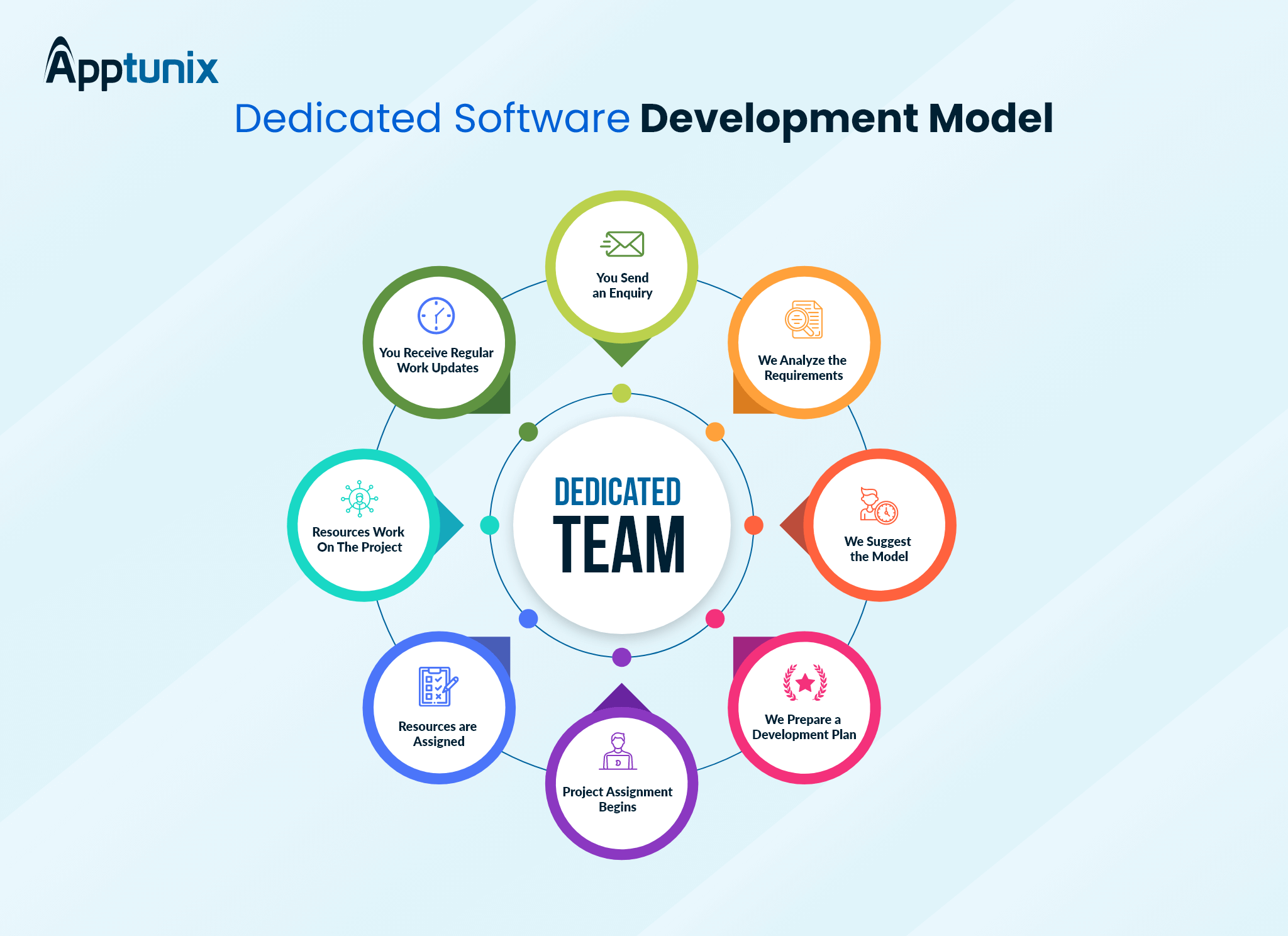Software dedicated team plays a crucial role in the success of development projects. From defining their roles to overcoming challenges, let’s delve into the world of software dedicated teams.
Definition of Software Dedicated Team

A software dedicated team is a group of professionals who are solely focused on a specific software development project or a set of projects. This team works exclusively on the assigned tasks and collaborates closely to achieve the project goals efficiently.
Tasks Handled by a Software Dedicated Team
- Designing and developing software applications
- Testing and quality assurance of the software
- Continuous integration and deployment
- Providing maintenance and support for the software
Benefits of Having a Dedicated Team for Software Projects
- Enhanced focus and expertise: A dedicated team is fully committed to the project, leading to better quality and faster delivery.
- Improved communication and collaboration: Team members work closely together, fostering better communication and collaboration for efficient problem-solving.
- Flexibility and scalability: The team can easily adapt to changing project requirements and scale up or down as needed.
- Consistent progress: With a dedicated team, there is a consistent progress flow without interruptions from other projects or tasks.
Building a Software Dedicated Team

Building a software dedicated team involves key steps to ensure the team is well-assembled and equipped to handle the demands of software development projects. This includes identifying the roles and responsibilities within the team, as well as implementing strategies for recruiting and retaining top talent.
Key Steps in Assembling a Software Dedicated Team
- Define the project requirements and scope to determine the skill sets needed.
- Identify and recruit individuals with the necessary technical expertise and experience.
- Establish clear team goals, roles, and responsibilities to ensure alignment and accountability.
- Provide ongoing training and professional development opportunities to enhance skills and knowledge.
- Promote effective communication and collaboration within the team to foster productivity and innovation.
Roles and Responsibilities within a Software Dedicated Team
- Project Manager: Oversees project planning, execution, and delivery.
- Software Developers: Responsible for coding, testing, and debugging software applications.
- Quality Assurance Analysts: Ensure the quality and reliability of software through testing and validation.
- UI/UX Designers: Focus on creating user-friendly interfaces and enhancing the overall user experience.
- DevOps Engineers: Manage the deployment, monitoring, and maintenance of software applications.
Strategies for Recruiting and Retaining Top Talent
- Offer competitive salaries and benefits to attract skilled professionals.
- Create a positive work environment with opportunities for growth and advancement.
- Provide training and development programs to support continuous learning and skill improvement.
- Recognize and reward team members for their contributions and achievements.
- Encourage open communication and feedback to address concerns and foster a collaborative culture.
Collaboration and Communication: Software Dedicated Team
Effective collaboration and communication are crucial for the success of a software dedicated team. By fostering a culture of collaboration and maintaining open lines of communication, team members can work together efficiently towards common goals. Utilizing tools and technologies designed for virtual teams can further enhance collaboration and communication within the team.
Fostering Collaboration
Collaboration can be encouraged within a software dedicated team by promoting a sense of shared ownership and accountability. Team members should be encouraged to share ideas, provide feedback, and work together towards finding solutions. Establishing clear goals and expectations can help align team members towards a common purpose.
- Utilize project management tools such as Jira or Trello to assign tasks, track progress, and foster collaboration among team members.
- Organize regular team meetings or brainstorming sessions to encourage collaboration and idea-sharing.
- Create a culture of transparency and open communication where team members feel comfortable expressing their thoughts and opinions.
Effective Communication
Effective communication is essential for ensuring that team members are on the same page and working towards the same objectives. Clear and concise communication can prevent misunderstandings, delays, and conflicts within the team.
- Utilize communication tools such as Slack or Microsoft Teams to facilitate real-time communication and quick decision-making.
- Establish clear channels for communication, such as email, chat platforms, or video conferencing, to ensure that important information is shared promptly.
- Encourage active listening and provide feedback to ensure that messages are understood and interpreted correctly by team members.
Tools and Technologies for Collaboration and Communication
There are several tools and technologies available that can facilitate collaboration and communication within virtual teams, making it easier for team members to work together efficiently despite physical distance.
| Tool/Technology | Description |
|---|---|
| Zoom | A video conferencing tool that allows team members to hold virtual meetings, webinars, and conferences. |
| Google Workspace | A suite of collaboration tools including Google Docs, Sheets, and Slides for real-time editing and sharing of documents. |
| GitHub | A platform for version control and collaboration on software development projects, enabling team members to work together on code. |
Project Management and Workflow
Project management within a software dedicated team plays a crucial role in ensuring the successful delivery of projects. It involves planning, organizing, and overseeing the execution of tasks to achieve specific goals within a set timeframe and budget.
Workflow Processes
Effective workflow processes are essential for ensuring efficient project delivery within a software dedicated team. This typically involves the following steps:
- Requirement Analysis: This phase involves gathering and analyzing the project requirements to define the scope of work and project objectives.
- Planning: The team creates a detailed project plan outlining tasks, timelines, resources, and dependencies.
- Development: The actual development work takes place based on the project plan and requirements.
- Testing: The software is thoroughly tested to identify and fix any bugs or issues before deployment.
- Deployment: The final product is deployed to the client or end-users after successful testing.
- Monitoring and Maintenance: Post-deployment, the team monitors the software’s performance and provides ongoing maintenance and support as needed.
Agile Methodologies
Agile methodologies, such as Scrum and Kanban, are commonly used by software dedicated teams to streamline project management and workflow processes. These methodologies emphasize iterative development, frequent collaboration, and adaptability to changing requirements. By breaking down projects into smaller, manageable tasks and conducting regular team meetings (sprints), agile methodologies help teams respond quickly to feedback and deliver high-quality software efficiently.
Challenges and Solutions

Facing challenges is inevitable for software dedicated teams, but having effective strategies in place can help overcome obstacles and ensure team success. Let’s delve into common challenges and propose solutions to maintain motivation and productivity.
1. Communication Breakdown
Communication breakdowns can lead to misunderstandings, delays, and errors in software development projects. To overcome this challenge, teams can implement the following solutions:
- Establish clear communication channels and protocols to ensure everyone is on the same page.
- Encourage open and transparent communication among team members to foster collaboration and idea-sharing.
- Utilize project management tools and software to streamline communication and keep all stakeholders informed.
2. Scope Creep and Changing Requirements
Scope creep and changing requirements can disrupt project timelines and cause frustration among team members. To address this challenge, teams can consider the following strategies:
- Define project scope and requirements clearly from the outset to minimize scope creep.
- Implement an agile development approach to adapt to changing requirements and prioritize tasks effectively.
- Regularly review and reassess project goals and deliverables to ensure alignment with client expectations.
3. Technical Challenges and Skill Gaps
Technical challenges and skill gaps within the team can hinder project progress and impact overall productivity. To tackle this issue, teams can adopt the following solutions:
- Provide training and upskilling opportunities for team members to bridge skill gaps and enhance expertise.
- Encourage knowledge sharing and collaboration among team members to leverage individual strengths and expertise.
- Seek external support or hire additional resources with the required technical skills to address specific challenges.
4. Team Motivation and Burnout
Maintaining team motivation and preventing burnout is crucial for long-term success and productivity. To keep team members engaged and energized, consider the following approaches:
- Recognize and reward team achievements to boost morale and motivation.
- Encourage a healthy work-life balance by promoting breaks, time off, and stress management techniques.
- Foster a positive team culture that values collaboration, innovation, and personal growth.
Closure
In conclusion, software dedicated teams offer a structured approach to project management, ensuring efficient workflow and effective collaboration. By understanding the key strategies and tools, teams can navigate challenges and achieve project success.
Questions and Answers
What tasks are typically handled by a software dedicated team?
A software dedicated team handles tasks such as software development, quality assurance, project management, and ongoing support.
How can software dedicated teams foster collaboration?
Software dedicated teams can foster collaboration through regular communication, clear goal-setting, and utilizing collaboration tools.
What are some common challenges faced by software dedicated teams?
Common challenges include communication breakdowns, mismatched skill sets, scope creep, and meeting project deadlines.
